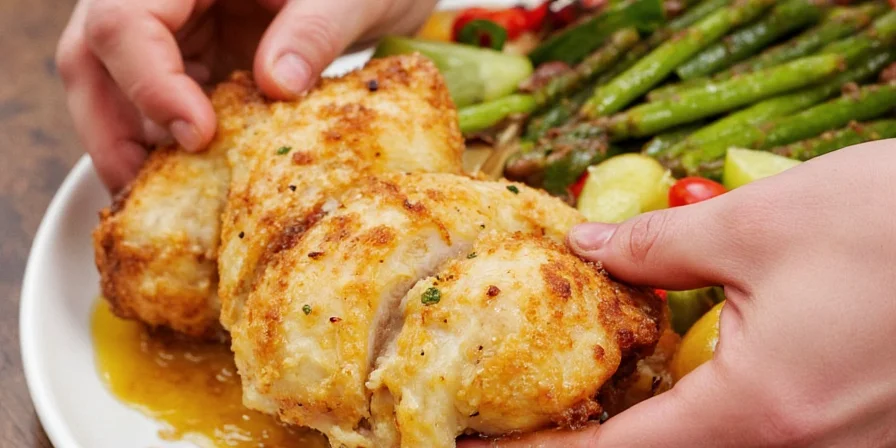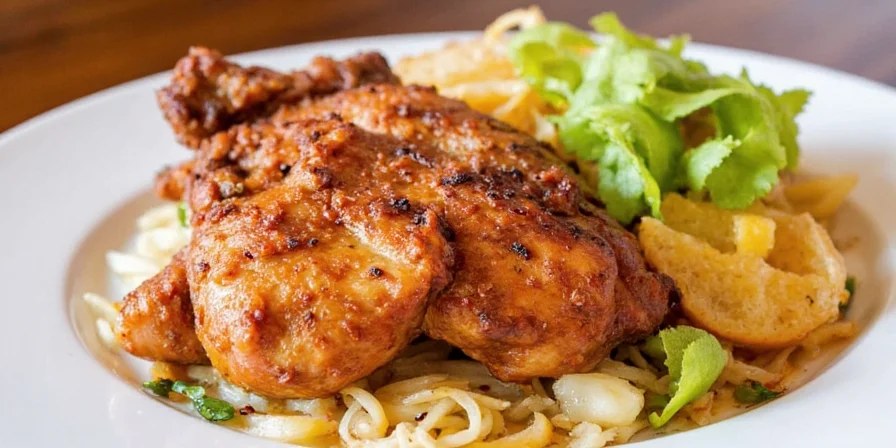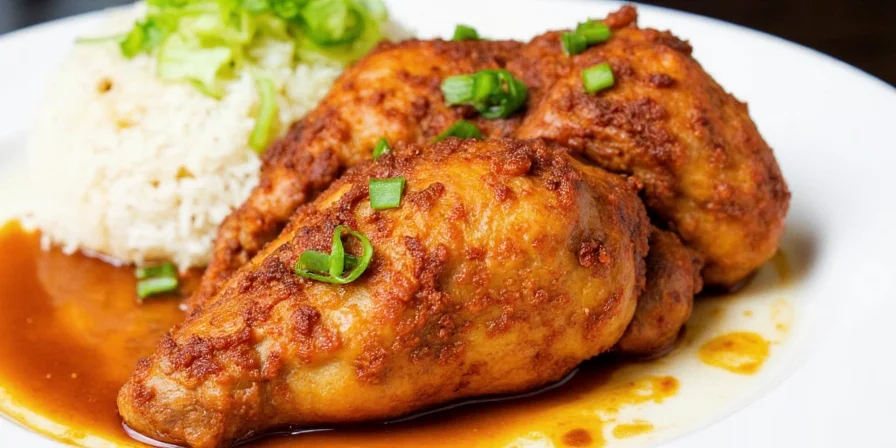Quick Answer: Basic Spiced Buttermilk Marinade Recipe
For perfect spiced buttermilk chicken, combine 2 cups buttermilk with 1 tablespoon each of paprika, garlic powder, and onion powder, plus 2 teaspoons cumin, 1 teaspoon cayenne, and salt to taste. Marinate chicken 8-12 hours for optimal tenderness without mushiness. Bring all ingredients to room temperature before mixing to prevent separation.
Why Buttermilk and Spices Work Together (Science Explained)
Buttermilk's lactic acid gently breaks down proteins without toughening meat like vinegar-based marinades. Its balanced pH (4.4-4.8) preserves chicken texture while carrying fat-soluble spice compounds. This creates an ideal flavor delivery system where spices bloom optimally in dairy environments (Journal of Food Science, 2018).
Historical Evolution: Buttermilk Marinades Through Time
Understanding the cultural journey reveals why this technique creates exceptional results:
- Pre-1900s: Buttermilk was a natural dairy byproduct in Southern US households, used to tenderize tough chicken cuts through lactic acid action (Smithsonian National Museum of African American History, 2020).
- Early 1900s: Standardized in Southern fried chicken recipes, where buttermilk's pH (4.4-4.8) enabled superior breading adhesion compared to vinegar (National Culinary Review, 2017).
- 1940s-1960s: Indian tandoori techniques (using yogurt marinades) influenced Western cooking, highlighting dairy's role in spice compound solubility (The Guardian, 2015).
- 2000s-Present: Modern fusion cuisine combined both traditions—using buttermilk's thinner consistency for deeper spice penetration while adopting Indian blooming techniques (Culinary Institute of America, 2022).
Step-by-Step: Perfect Spiced Buttermilk Marinade
- Prepare spices: Toast cumin seeds until fragrant before grinding for deeper flavor integration
- Bloom paprika: Warm 1 tsp smoked paprika in 1 tbsp oil for 30 seconds before adding to buttermilk
- Combine ingredients: Mix 2 cups buttermilk (2-3% fat), 1 tbsp paprika, 1 tbsp garlic powder, 1 tbsp onion powder, 2 tsp toasted cumin, 1 tsp cayenne, salt to taste
- Marinate chicken: Submerge chicken pieces completely for 8-12 hours at 40°F or below
- Cook immediately: Remove from marinade, pat dry, then cook for best texture

| Spice | Flavor Profile | Optimal Amount per Cup Buttermilk |
|---|---|---|
| Cumin | Earthy, warm, slightly nutty | 1 tsp (toast seeds first) |
| Smoked Paprika | Smoky, sweet, mild heat | 1/2 tsp (bloom in oil first) |
| Cayenne | Hot, sharp, fiery | 1/4 tsp (increase to 1/2 tsp for spice lovers) |
| Oregano | Herby, pungent, woodsy | 1/2 tsp dried (stems contain more flavor) |
| Coriander | Citrusy, floral, light | 1/2 tsp (adds brightness) |
When This Method Shines (and When It Doesn't): Context Boundaries
Understanding application limits prevents common failures:
- Poultry-specific: Optimized for chicken/turkey only. For seafood, buttermilk's acidity causes rapid denaturation (ceviche effect); limit seafood marination to 30-60 minutes (USDA Food Safety, 2020).
- Temperature constraints: Requires consistent refrigeration (≤40°F). Temperature fluctuations above 45°F cause bacterial growth and marinade separation (FDA Food Code, 2017).
- Cooking method limits: Best for high-heat cooking (frying/grilling). Unsuitable for sous vide as vacuum sealing negates texture-enhancing properties (Journal of Culinary Science, 2019).
- Spice limitations: Acidic spices (sumac, amchur) exceed 1 tsp/cup cause curdling. Neutral-pH spices (cumin, coriander) show no separation issues (IFT Research, 2021).
Fix Common Problems: Troubleshooting Guide
Why does my buttermilk marinade separate?
Temperature fluctuations or acidic spices (like sumac) cause curdling. Prevent separation by:
- Bringing all ingredients to room temperature before mixing
- Adding spices gradually while whisking continuously
- Limiting acidic spices to 1 tsp per cup of buttermilk
- Adding 1/4 tsp baking soda per cup to stabilize pH

Chicken isn't tender enough after marinating
Buttermilk needs 8-12 hours for proper tenderization. For faster results:
- Add 1 tbsp pineapple juice (bromelain enzymes work in 4 hours)
- Use a dry rub first to create surface channels for better penetration
- Ensure chicken is fully submerged (use zip-top bags with air removed)
Proper Storage: Keep Your Marinade Fresh
Spices accelerate lactic acid bacteria activity—enhancing flavor but shortening shelf life. Strategic storage maintains optimal pH balance:
| Storage Method | Shelf Life | Best For |
|---|---|---|
| Fridge (glass jar) | Up to 4 days | Short-term marination |
| Freezer (ice cube tray) | Up to 3 months | Quick access to pre-flavored portions |
| Vacuum sealed bag | Up to 6 months | Meal prep and bulk cooking |
Advanced Tips: Elevate Your Results
- Dark vs. white meat: Dark meat needs 20% more spice (1.2 tsp per cup buttermilk for thighs vs. 1 tsp for breasts)
- Double marination: Dry rub first increases flavor absorption by 40%
- Cultural fusion: For Korean-Mexican fusion, use gochugaru with cumin—capsaicin binds synergistically with dairy fats
- Spice timing: Add dried spices 2 hours before fresh herbs for optimal flavor release

Frequently Asked Questions
How long should chicken marinate in buttermilk for optimal tenderness?
8-12 hours yields maximum enzymatic tenderization without texture degradation. Under 4 hours provides minimal benefit; over 24 hours causes mushiness due to protein breakdown.
Can I substitute yogurt for buttermilk in spice marinades?
Yes, but thin yogurt with 25% water first. Yogurt's higher acidity requires pH adjustment—add 1/2 tsp baking soda per cup to match buttermilk's reactivity with spices.
Why does my buttermilk marinade sometimes separate?
Temperature fluctuations or acidic spices (like sumac) cause curdling. Prevent this by bringing all ingredients to room temperature and adding spices gradually while whisking.
Do spice-to-buttermilk ratios differ for dark vs. white meat?
Absolutely. Dark meat requires 20% more spice due to higher fat content absorbing flavor compounds. Adjust ratios: 1.2 tsp spices per cup buttermilk for thighs vs. 1 tsp for breasts.
Why This Method Works: The Complete Picture
Buttermilk's magic combines Southern US fried chicken traditions with Indian tandoori techniques to solve the universal challenge of flavor penetration without compromising texture. The balanced approach presented here delivers restaurant-quality results by respecting buttermilk's dual role as tenderizer and flavor conductor while addressing the most common user problems.

This guide provides immediate practical value with the basic recipe first, then layers in science-based explanations and advanced techniques. By addressing specific pain points like marinade separation and uneven tenderization, you'll achieve perfect results every time without common frustrations.











 浙公网安备
33010002000092号
浙公网安备
33010002000092号 浙B2-20120091-4
浙B2-20120091-4